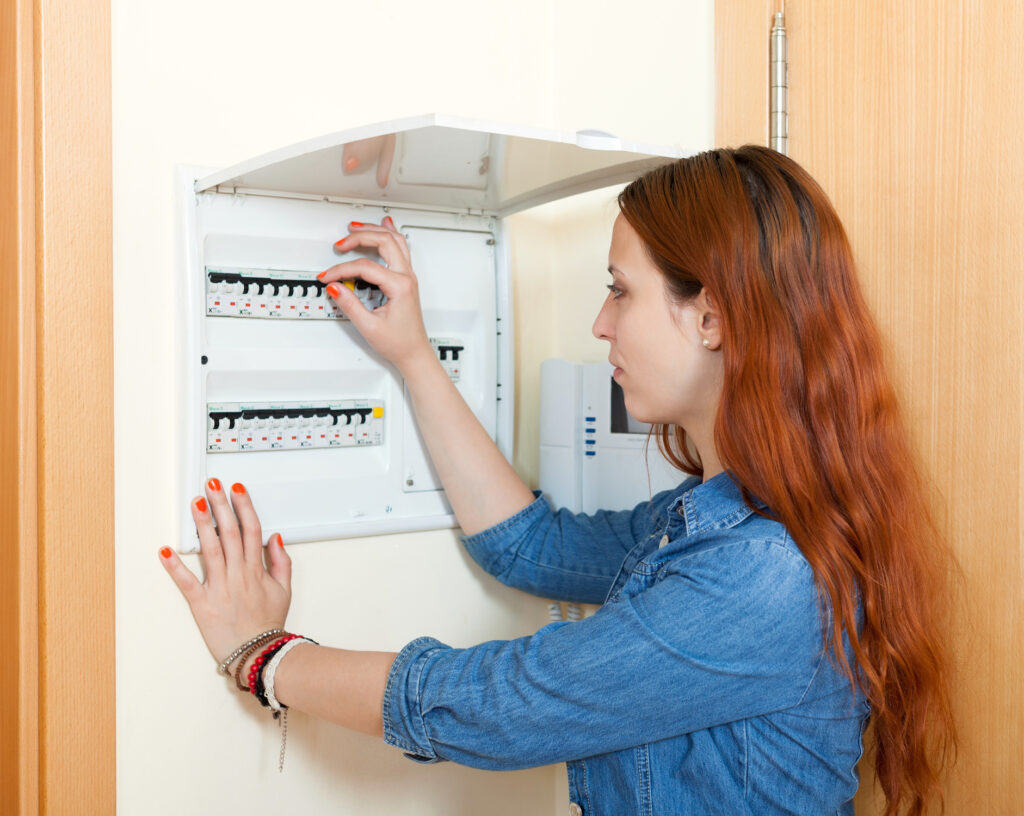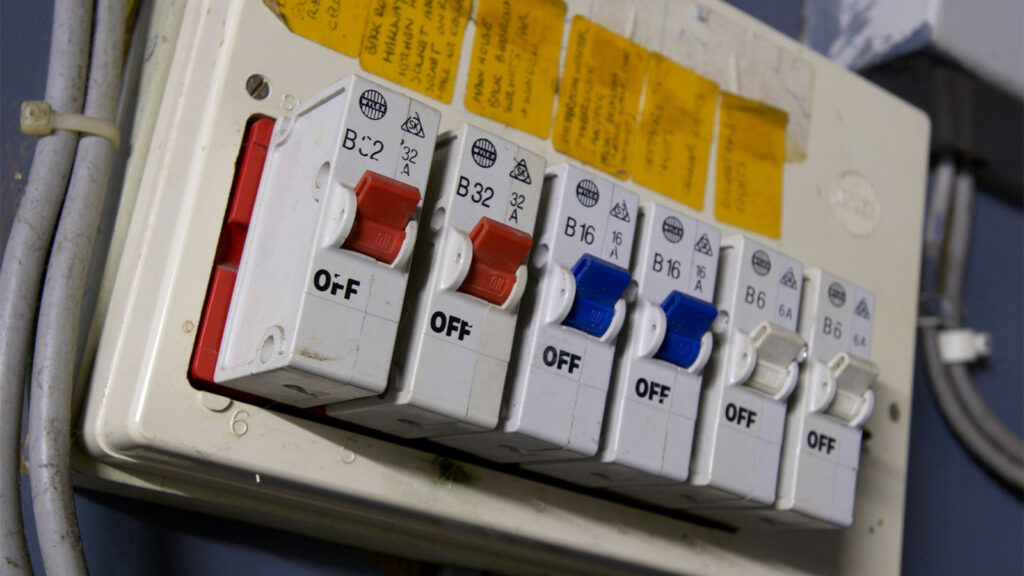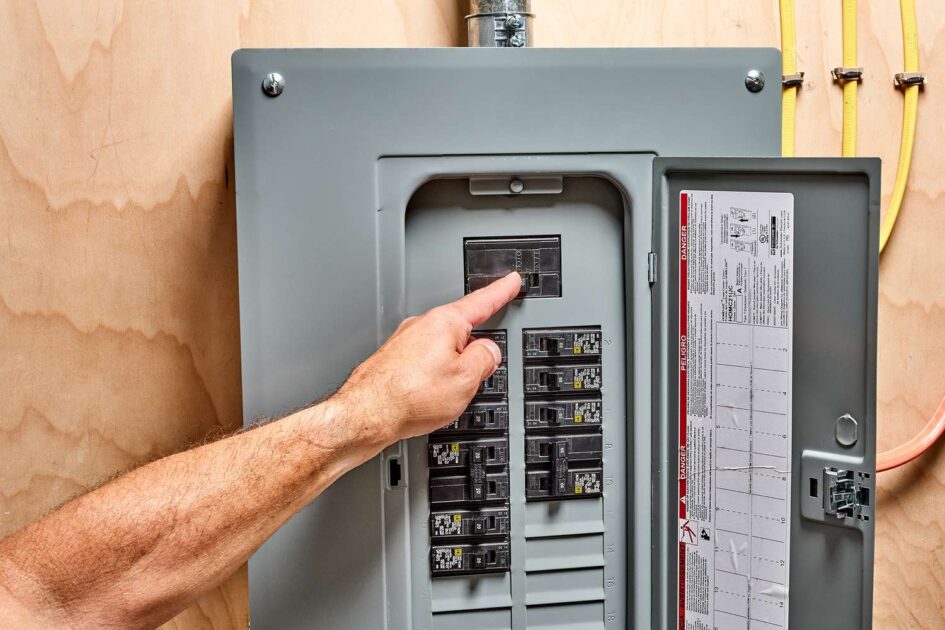In order to ensure the safety and efficiency of your electrical panel, it is crucial to choose the right circuit breaker. A circuit breaker serves as a vital component that protects your electrical system from overloading and potential hazards such as electrical fires. Understanding the role and types of circuit breakers, assessing your electrical load, and knowing how to troubleshoot and maintain them are all important aspects to consider.
Understanding the Role of a Circuit Breaker
Before delving into the various types of circuit breakers, it is essential to have a basic understanding of their role. An electrical breaker acts as a switch in your electrical panel that automatically shuts off the flow of electricity if it detects an overload or short circuit. This prevents any further damage to your electrical system and reduces the risk of electrical shocks and fires.
Imagine a scenario where you have multiple appliances running simultaneously in your home – the air conditioner, refrigerator, and washing machine. All of these appliances require a certain amount of electrical current to function properly. However, if there is a sudden surge in the electrical current due to a malfunction or a power surge from the utility company, it can overload the electrical system.
See Also: The Crucial Role of Conduit Fittings in Electrical Wiring Systems
This is where the circuit breaker comes into play. It acts as a guardian, constantly monitoring the flow of electricity. When it detects an abnormal increase in the electrical current, it quickly reacts by tripping the mechanism and cutting off the power supply. This action prevents the electrical system from being overwhelmed and potentially causing damage to the appliances or even starting a fire.

The Basics of Circuit Breakers
Circuit breakers comprise two main components: the trip mechanism and the contacts. The trip mechanism is responsible for sensing any abnormalities in the electrical current and triggering the mechanism to cut off the flow of electricity. It acts as the brain of the circuit breaker, constantly monitoring the current passing through it.
Within the trip mechanism, there are different types of sensors that can detect various electrical faults. For example, some circuit breakers use thermal sensors that measure the heat generated by the electrical current. If the temperature exceeds a certain threshold, the trip mechanism is activated, and the contacts are opened, interrupting the flow of electricity.
Other circuit breakers use magnetic sensors that detect sudden spikes or surges in the electrical current. These sensors are particularly effective in detecting short circuits, where the current deviates from its intended path and creates a dangerous situation. Once the magnetic sensor detects a fault, it triggers the trip mechanism, and the contacts are immediately opened, preventing any further flow of electricity.
Safety Features of Circuit Breakers
Circuit breakers are designed with various safety features to ensure the protection of your electrical system. One notable safety feature is the ability of circuit breakers to be manually switched off during maintenance or repair work. This allows electricians or homeowners to work safely on the electrical system without the risk of electrical shocks.
Additionally, modern circuit breakers are equipped with arc fault circuit interrupters (AFCIs) and ground fault circuit interrupters (GFCIs) that provide further protection against electrical hazards. AFCIs are designed to detect and prevent electrical arcs, which are a common cause of electrical fires. GFCIs, on the other hand, monitor the flow of electricity and quickly shut off the power if they detect a ground fault, such as when an electrical current leaks to the ground.
These safety features add an extra layer of protection to your electrical system, ensuring the safety of your home and the people living in it. By investing in quality circuit breakers and regularly maintaining them, you can have peace of mind knowing that your electrical system is safeguarded against potential hazards.
Types of Circuit Breakers
When it comes to electrical systems, safety is paramount. That’s why there are various types of circuit breakers available, each designed to cater to specific electrical requirements. Understanding these types will not only help you ensure the safety of your electrical panel but also determine the right circuit breaker for your specific needs.

Single-Pole Breakers
A single-pole breaker is the most common type of circuit breaker used in residential settings. It is designed to protect individual circuits and typically handles a voltage rating of 120 volts. These breakers are like the guardians of your electrical system, monitoring the flow of electricity and stepping in to protect the circuit when necessary.
Single-pole breakers are generally used for lighting and general-purpose outlets. They are the unsung heroes that keep your home illuminated and power up your everyday devices. From the warm glow of your bedside lamp to the charging of your smartphone, single-pole breakers ensure that electricity flows smoothly and safely.
Double-Pole Breakers
When it comes to circuits that require higher voltage, such as kitchen appliances, air conditioners, and electric heaters, double-pole breakers come into play. As the name suggests, these breakers consist of two poles, providing the necessary protection for these power-hungry devices.
Double-pole breakers typically handle a voltage rating of 240 volts. They are the mighty defenders of your electrical system, capable of handling the heavy loads required by your appliances. From the sizzling sound of your stove as you cook up a delicious meal to the cool breeze of your air conditioner on a scorching summer day, double-pole breakers ensure that these high-powered devices operate safely and efficiently.
GFCI Breakers
Ground faults can be a serious hazard, and that’s where GFCI (Ground Fault Circuit Interrupter) breakers come into play. They are specifically designed to protect against ground faults, which occur when there is an unintended path for electrical current to flow to the ground.
GFCI breakers are commonly used in areas where there is a higher risk of electrical shock, such as bathrooms, kitchens, and outdoor outlets. They are the vigilant protectors of your safety, constantly monitoring the electrical current and swiftly interrupting it when a ground fault is detected. From the soothing sound of your morning shower to the sizzle of your frying pan, GFCI breakers ensure that you can enjoy these everyday activities without worrying about electrical hazards.
So, whether you’re illuminating your home, powering up your appliances, or ensuring your safety, there is a circuit breaker designed to meet your specific needs. Understanding the different types of circuit breakers empowers you to make informed decisions when it comes to your electrical system, ensuring the safety and efficiency of your home.
Determining the Right Circuit Breaker for Your Needs
Choosing the right circuit breaker for your electrical panel requires a thorough assessment of your electrical load and the type of devices connected to your electrical system.
When it comes to electrical safety, selecting the appropriate circuit breaker size is crucial. An undersized breaker can lead to frequent tripping, while an oversized breaker may not provide adequate protection against electrical faults. To ensure the safety and efficiency of your electrical system, it is important to assess your electrical load accurately.
Assessing Your Electrical Load
In order to determine the appropriate circuit breaker size, it is important to assess your electrical load. This involves calculating the total power consumption of all the appliances and devices connected to your electrical panel. It is recommended to consult an electrician for an accurate assessment.
During the assessment, the electrician will take into consideration various factors such as the wattage rating of each device, the number of devices connected, and the simultaneous use of multiple devices. This comprehensive evaluation will help determine the maximum electrical load your system can handle without overloading the circuit breakers.
Additionally, it is important to consider future electrical needs when assessing your electrical load. If you are planning to add new appliances or devices to your system, it is essential to account for their power requirements to ensure that your circuit breakers can handle the increased load.

Considering the Type of Devices Connected
The type of devices connected to your electrical system plays a significant role in choosing the right circuit breaker. High-powered appliances such as air conditioners, electric heaters, and electric stoves require double-pole breakers to handle the increased electrical demand.
On the other hand, sensitive electronic devices like computers, home entertainment systems, and medical equipment require additional protection against electrical arcs. Arc Fault Circuit Interrupter (AFCI) breakers are specifically designed to detect and prevent electrical arcs that can lead to fires or damage the components of these devices.
By incorporating AFCI breakers into your electrical panel, you can significantly reduce the risk of electrical fires caused by arcing faults. These breakers monitor the electrical current and instantly disconnect the circuit if they detect any abnormal arcing, providing an added layer of safety for your sensitive electronic devices.
Furthermore, if your electrical system includes outdoor circuits or circuits that are exposed to moisture, Ground Fault Circuit Interrupter (GFCI) breakers should be installed. GFCI breakers are designed to protect against electrical shocks by quickly shutting off the power when a ground fault is detected.
It is important to note that while AFCI and GFCI breakers provide enhanced safety, they should not be used as a substitute for proper grounding and other electrical safety measures. They are complementary devices that work in conjunction with other safety features to provide comprehensive protection for your electrical system.
In conclusion, selecting the right circuit breaker for your needs involves a careful evaluation of your electrical load and the type of devices connected to your system. By consulting with an electrician and considering the specific requirements of your appliances and devices, you can ensure the safety, efficiency, and longevity of your electrical system.
Installation Process of Circuit Breakers
Installing circuit breakers should always be done by a qualified electrician to ensure safety and compliance with electrical codes. However, it is valuable to understand the installation process and the necessary safety measures involved.
Pre-Installation Safety Measures
Prior to installation, it is crucial to follow important safety measures. This includes turning off the main power supply, wearing appropriate protective gear, and ensuring a clean and orderly work area.
Step-by-Step Installation Guide
An electrician will follow a step-by-step installation guide to ensure the circuit breaker is properly installed. This involves identifying the suitable location in the electrical panel, making the necessary electrical connections, and securing the breaker in place.
Maintenance and Troubleshooting of Circuit Breakers
Once your circuit breakers are installed, regular maintenance and troubleshooting are necessary to ensure their optimal performance.
Regular Maintenance Tips
Regularly inspecting your circuit breakers for any signs of damage or wear is essential. This includes looking for loose connections, corrosion, or overheating. Additionally, it is important to keep your electrical panel clean and free from debris.
Common Circuit Breaker Issues and Solutions
Despite their durability, circuit breakers may experience issues over time. Common problems include tripping, not resetting, or not supplying power to specific circuits. Understanding the underlying causes and working with a professional electrician can help identify and resolve these issues effectively.
Ensuring the safety and efficiency of your electrical panel starts with choosing the right circuit breaker. By understanding their role, familiarizing yourself with the different types available, determining your electrical load, following proper installation procedures, and conducting regular maintenance, you can make informed decisions and protect your electrical system from potential hazards.

Leave a Reply